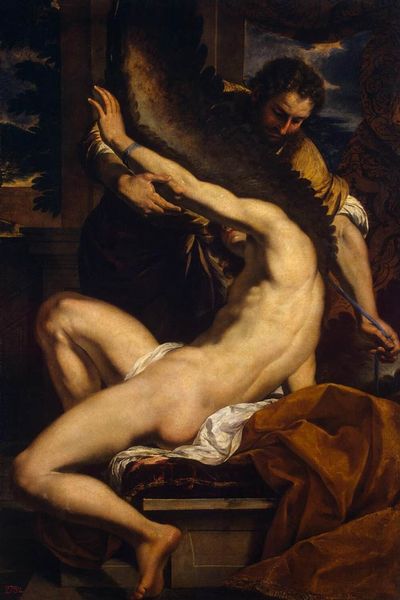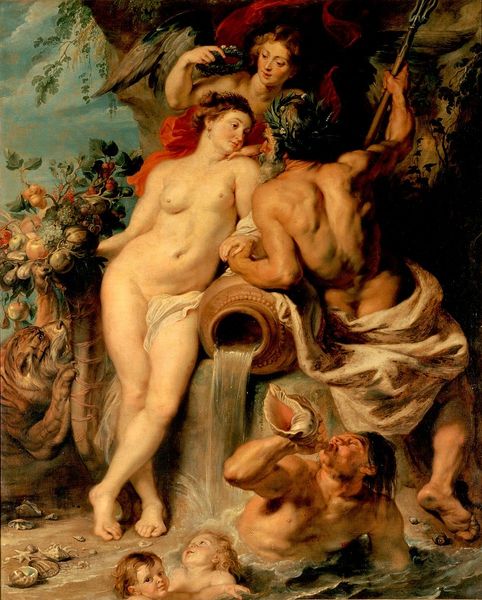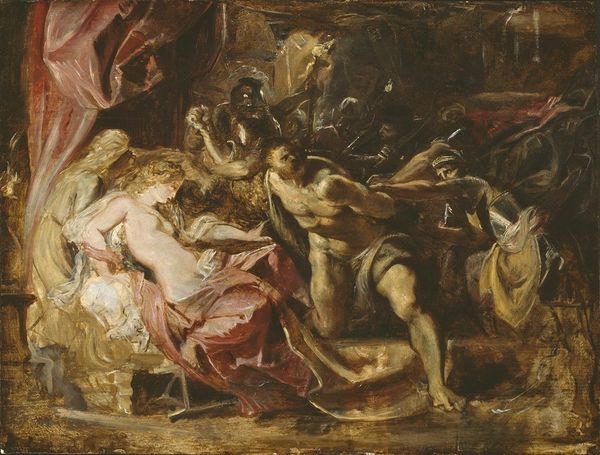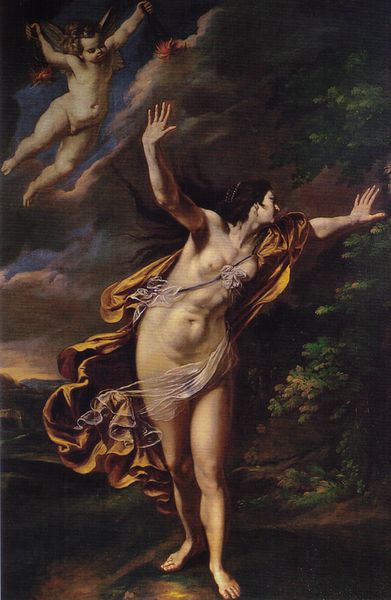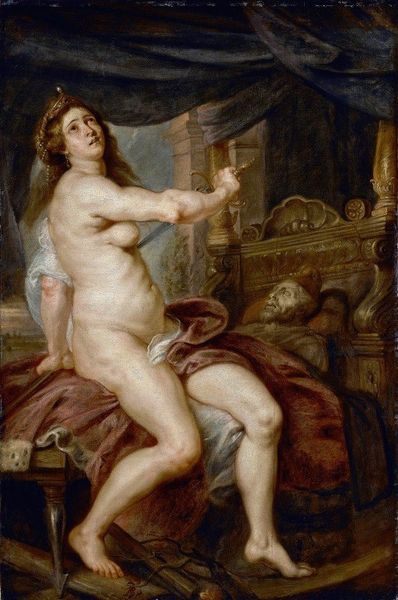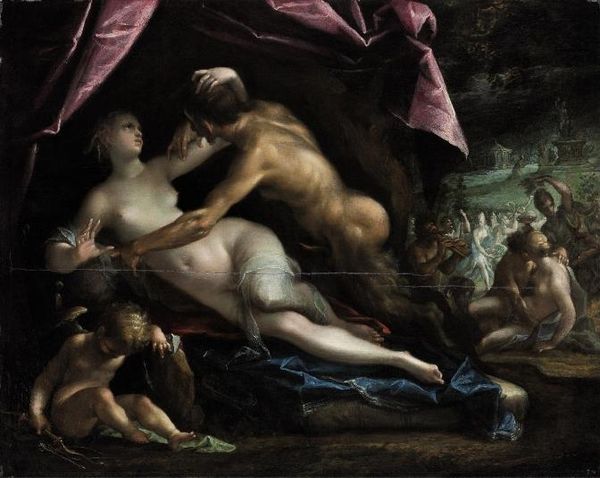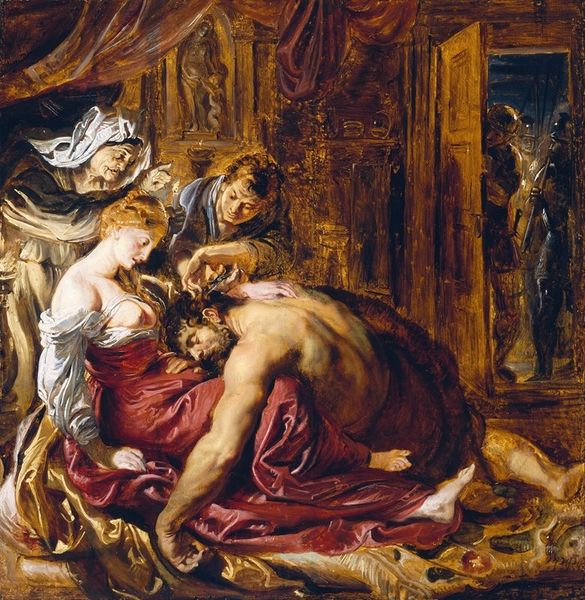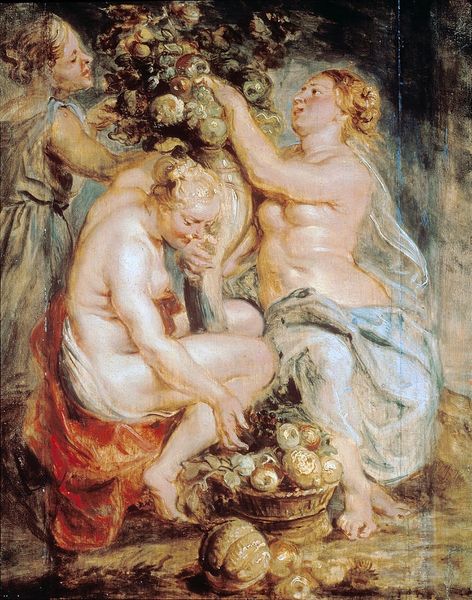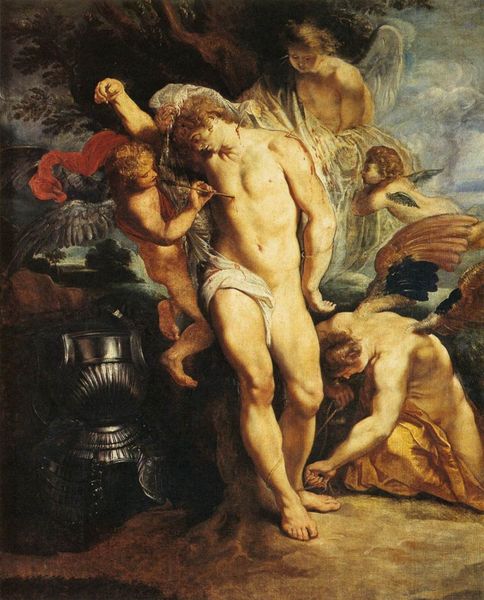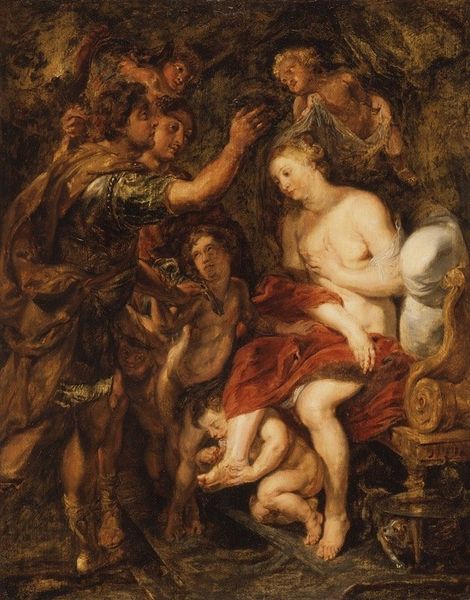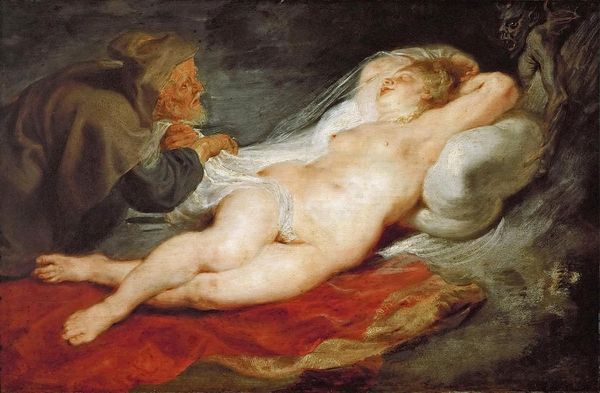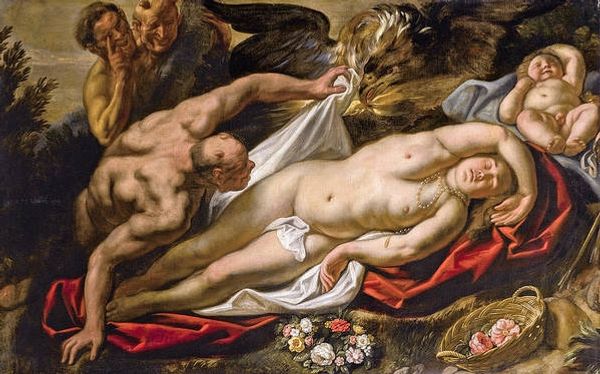
oil-paint
#
allegory
#
baroque
#
oil-paint
#
oil painting
#
mythology
#
history-painting
#
nude
Copyright: Public domain
Curator: This is Peter Paul Rubens’s “Amor and Psyche,” painted in 1636 and currently residing at the Musée Bonnat in Bayonne, France. Rubens masterfully employs oil paint to capture this mythological scene. Editor: Ah, the air in here just thickened with anticipation, didn’t it? The painting exudes this intimate, almost hushed mood—a secret about to be revealed, rendered in rich golden hues. There's an intensity here despite the quiet scene. Curator: Rubens was deeply interested in exploring mythological and allegorical narratives, as many artists of the Baroque period were. The tale of Amor and Psyche, full of forbidden love and fateful curiosity, lends itself to rich symbolic interpretation regarding identity and transgression. Consider how notions of beauty and monstrousity might affect Psyche as she gazes down upon a sleeping Amor? Editor: True, beauty as monstrousity and monstrousity as beautiful. And what do you make of that singular light? It just so happens to glance off Psyche’s skin. See how it dances from her arm to her waist? This spotlight makes me question the power dynamics at play. Curator: That play of light could symbolize awakening, enlightenment, or even knowledge, which, in the story, is dangerous to Psyche. Given how frequently visual culture is used to shame or uplift female figures, particularly regarding the use of nudity, how do you suppose that relates to a mythological retelling such as this one? Editor: Oh, I think it all boils down to perspective, doesn’t it? Her body is rendered vulnerably but I don’t see exploitation. Her stare, although cast downwards at the object of her infatuation, is imbued with something that reads almost defiant to me. To that end, it’s really hard to feel sorry for Psyche, whose hand guides both the lamp and our understanding of the scene at large. It really makes you ponder all that we still consider to be taboo even now. Curator: Absolutely, this work provides a fascinating lens through which we can examine shifting societal attitudes toward not only eroticism, gender, and mythology, but to consider that each and every lens itself carries with it the weight of perspective. Editor: Well, I'm left feeling delightfully uneasy, ready to question all my assumptions about looking and seeing. What a provocative dance Rubens has stirred up!
Comments
No comments
Be the first to comment and join the conversation on the ultimate creative platform.
